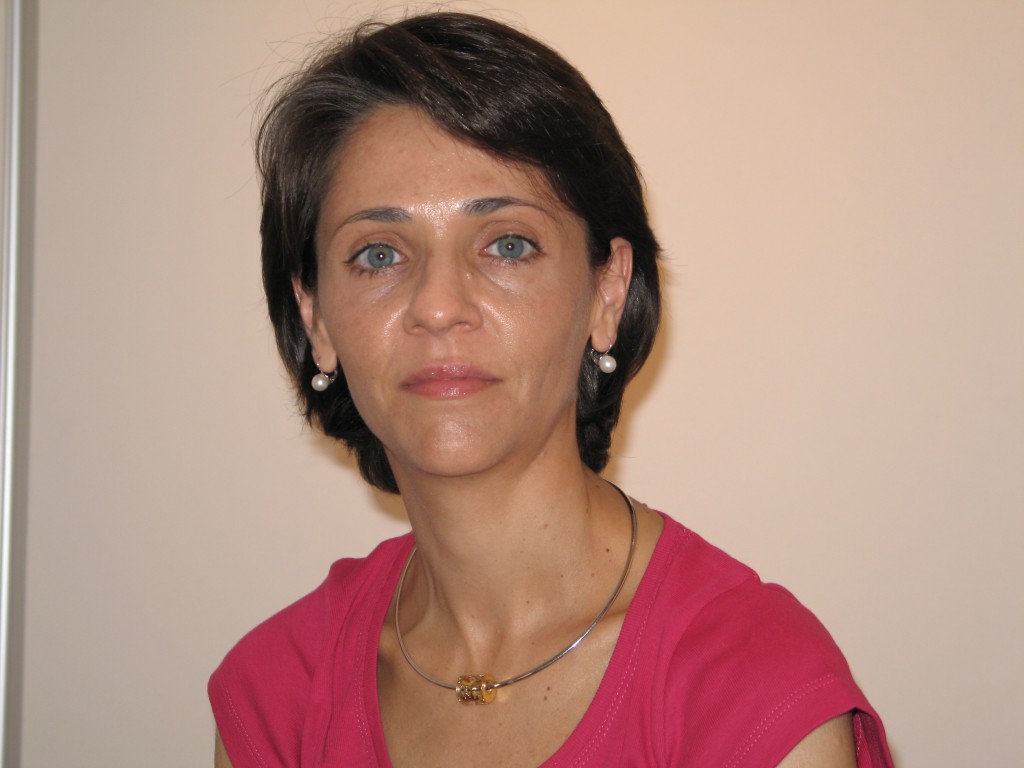Thirty organizations from fifteen countries are coming together to conduct gut microbiome research in a new project called MyNewGut.
Professor Yolanda Sanz has been appointed MyNewGut’s project coordinator and leads the project’s human intervention trials on the gut microbiome’s ability to metabolise nutrients and influence energy balance. She is a Professor of Research at the Institute of Agrochemistry and Food Technology (IATA) of the Spanish National Research Council (CSIC), and is head of the research group on microbial ecology, nutrition, and health.
As a follow-up to our article highlighting this EU-funded multidisciplinary research project, the publishing team spoke with Prof. Sanz about the endeavour.

Prof. Yolanda Sanz of Spain will be MyNewGut’s project coordinator
How did you come to be involved with the MyNewGut project?
There was a call for projects that were funded by the European Commission and one of the topics, very closely related to our field of research, was called ‘Factors influencing the gut microbiome and its effects on the development of diet related diseases and brain development’. We started thinking of the possibility of doing a consortium to prepare a proposal in this area because we have long-term experience in the field, and we also have strong contacts at the international level.
What makes the project unique?
The first feature that makes it unique is the composition of the consortium. For the first time it’s very well balanced and integrates all the international experts that are necessary to give meaning to these microbiome data. So far, there are a lot of data that are very good and descriptive… but still we don’t know… the physiological meaning of all these data. In this project we have for the first time a very well-balanced consortium of groups that are experts in microbiology and metagenomic analysis, and also experts in the field of human physiology and nutrition, in immunology, in brain research and psychiatry, and in computation and modelling and other ‘omics’ techniques that are going to be very important for giving meaning to these microbiome data.
The second feature that is important in our project is that [it’s] very focused on human studies, and we are going to combine well-controlled epidemiological studies [with] intervention studies in such a way we can progress from mere associations between gut microbiome components and disease risk factors to causality, to cause-effect relationships.
We’re going to cover with these human studies an extended period of the lifespan. We are going to cover population groups that represent different behaviours and different lifestyles and we are also going to address, in these studies, transition periods in life that are very important for the development of metabolic diseases, such as, for instance, the transition from the childhood to adolescence where many endocrine changes are taking place.
I would also like to highlight the fact that this project integrates functional ‘omics’ techniques: not only analysis of the metagenome by DNA-based techniques, but also functional ‘omics’ techniques, including metabolomics, lipidomics, and also metatranscriptomics, in such a way [that] we can also look at the microbes that are really functionally relevant in the human body.
Finally, I also want to mention that the project includes the possibility of translating these microbiome data into dietary recommendations and also into food products, ingredients, and prototypes that can in fact contribute to improv[ing] the lifestyle of the European and worldwide population. And probably, in a relatively short time, can also contribute to improv[ing] the competitiveness of the food industries.
What resources will you need to bring together to make this project a success?
It’s in fact a very challenging project, but I think we have very good international experts in the area, [who] have the resources necessary to do a good job… We have very good funding by the European Commission – we have 9 million Euros. I think it’s very important… during the course of the project… to expand our collaborations with other initiatives that are close to our field in such a way that we can always enrich our goals and enrich our technical approaches. This is a field that is evolving very quickly, and technically it’s also evolving really fast.
It’s also very important that we keep good contacts and strong links with our external advisors… [and] use this platform to get feedback from the food industry. We also [need to] keep [in] contact with different associations, nutritional and business associations, and also with the regulatory bodies in such a way that we can really translate all [this] new knowledge that we intend to generate into practical consequences: to products and recommendations.
What are the three practical challenges that you personally hope to address with this project?
Our objectives in the project are, first of all, to identify more specifically which are the components of the microbiome that are responsible for nutrient metabolism and also for energy balance… [and] to use this information to design dietary interventions that can promote a lean phenotype and can reduce the risk of metabolic disorders.
Second, our challenge is also to identify microbiome-related features that are risk factors for disease, for metabolic and brain related disorders, in such a way that these new biomarkers based on the microbiome can help us to anticipate and to predict disease, and also prevent disease.
Also, [a] very important challenge in this project is to provide proof of concept that dietary interventions with food and ingredients that are designed to modulate the gut microbiota can contribute to controll[ing] and reduc[ing] the incidence of diet-related diseases such as obesity and metabolic syndrome, and behavioural disorders, that are constituting an epidemic in our developed society.
This interview has been edited for clarity and length.

